Classic Studies on the Passion and Crucifixion of Christ (19 vols.)
Digital Logos Edition
Overview
This collection of sermons, devotionals, essays, and theological and historical studies reflect on the central event of the Christian faith: Jesus’ Passion and Crucifixion. Scholarly works explore the historicity of the Gospel accounts, examine the nature of crucifixion in the ancient world, and analyze who is historically culpable for Christ’s death. Then several collections of sermons and theological studies dig into the theological implications of the cross and the implications of Jesus’ final hours for practical Christian living.
Be sure to check out Classic Studies on Justification (19 vols.).

- Explores the historicity of the biblical account of Jesus’ death and the nature of crucifixion
- Examines the theological implications of Jesus’ work on the cross
- Applies the biblical account of Jesus’ death to practical Christian living
- Title: Classic Studies on the Passion and Crucifixion of Christ
- Volumes: 19
- Pages: 4,192
- Resource Type: Sermons, Monographs, Topical
- Topic: Biblical Studies, Doctrine of Christ
Individual Titles
- Crucifixion by John H. Osborne
- The Crucifixion and the Jews by Ludwig Philippson
- The Crucifixion of Christ by Daniel H. Hill
- The Trials and Crucifixion of Christ by A.P. Stout
- The Trial and Crucifixion of Jesus Christ of Nazareth by Mary Brodrick
- The Trial of Jesus Christ: A Legal Monograph by A. Taylor Innes
- The Trial of Jesus: Illustrated from Talmud and Roman Law by Septimus Buss
- Golgotha and the Holy Sepulchre by Charles William Wilson
- The Day of the Cross: A Course of Sermons on the Men and Women and Some of the Notable things of the Day of the Crucifixion of Jesus by W.M. Clow
- The Crucifixion Viewed from a Jewish Standpoint: A Lecture Delivered by Invitation before the “Chicago Institute for Morals, Religion and Letters” by Emil G. Hirsch
- Studia Crucis: Sermons on the Crucifixion and Related Themes by Alfred John Griffith
- The Hopes and Decisions of the Passion of our Most Holy Redeemer by William John Knox Little
- Light from the Cross: Sermons on the Passion of our Lord by August Tholuck
- Meditations on the Passion of Our Lord by Joseph Oswald Smith
- The Sacred Passion of Jesus Christ: Short Meditations for Every Day in Lent by Richard F. Clarke
- From the Garden to the Cross: A Study of Our Lord’s Passion by A.B. Cameron
- Lessons of the Cross and Passion: Four Courses of Lent Lectures by C.J. Vaughan
- Christus Crucifixus by James Gilliland Simpson
- Verbum Crucis by William Alexander
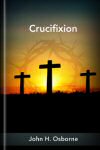
Crucifixion was an especially painful and shameful method of execution. In this historical and scriptural study, John H. Osborne details the Roman method of crucifixion and the accounts of Jesus’ crucifixion in particular. Osborne analyzes how Jesus’ death was consistent and different than other accounts of Roman execution, and what the significance of these variations might be.
John H. Osborne was a late nineteenth-century American biblical scholar and historian. He is also the author of Four Bible Studies: Shamelessness, Revenge, Prayer, and Fidelity.
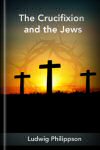
Ludwig Philippson, a German rabbi, examines the role of Jewish authorities in the death of Jesus. He defends the Jews against centuries of persecution, emphasizing the Roman nature of his execution. Written without “the intention to make any one unfaithful to Christianity, but merely to . . . serve as a fender against the assaults of prejudice.”
Ludwig Philippson (1811–1889) was a German rabbi and author. He published translations of Hosea, Joel, Obadiah, and Nahum when he was just 15 years old. He completed a full translation and commentary on the Hebrew Bible in 1853, which went through several editions and was translated into several languages.
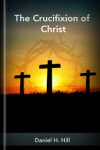
Examining the accounts of Jesus from Gethsemane to the cross, Daniel H. Hill “places the evangelists on the stand . . . and subjects them to the most rigid scrutiny.” Hill, an educated layman, uses secular principles to analyze all four accounts of Jesus arrest, trial, and execution. He concludes that the Gospels are full of “so many evidence of sincerity and truthfulness, that in any court of justice their testimony would be admitted.”
Daniel H. Hill was superintendent of the North Carolina Military Institute and a major in the United States Army.
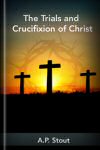
This verse-by-verse commentary on the Bible’s account of Jesus’ final hours examines his trials, dying utterances, and execution. A.P. Stout pays particular attention to John’s account, and its record of Jesus first and last trial, and the final events of the crucifixion. He also provides a chronological account of the crucifixion drawing on all four Gospels, “making one evangelist alternately supply the omissions of another.”
A.P. Stout was an American minister and the author of Journeys and Deeds of Jesus, Travels of Jesus, and Chronology of Christ’s Life.
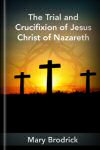
In this academic study, distinguished archaeologist Mary Brodrick investigates the crucifixion of Christ from “a formal and prosaic standpoint.” Brodrick focuses solely on the four Gospels, using her historical and archaeological expertise. Originally delivered as three lectures, the three chapters cover the arrest, trial, and crucifixion and burial of Jesus.
Mary Brodrick (1858–1933) was a British archaeologist and Egyptologist. Brodrick overcame the prejudice of her professors and peers to lead a distinguished scholarly career, and become one of the first female excavators of ancient Egypt. She is the author of Concise Dictionary of Egyptian Archaeology and the editor of Murray’s Handbook for Palestine and Syria.

In this legal analysis, A. Taylor Innes examines the Hebrew and Roman trials of Jesus—individually and together—from a lawyer’s perspective. Innes explains to the general reader the fascinating legal circumstances of Jesus final hours, in which the classical jurisprudence of Rome intersected with the peculiar system of the Jewish state. He answers questions about the legality of Jesus’ punishment, whether Jesus received due process, and whether at least an attempt of justice was made according to the standards of the time.
A. Taylor Innes (1833–1932) was a Scottish lawyer, writer, and church historian. He graduated from the University of Edinburgh and entered the legal field. Though he originally intended to become a minister, his scruples with the Westminster Confession of Faith prevented him from doing so.

Surveying the Roman and Jewish trials of Jesus, Septimus Buss provides insight into the legal systems that delivered Jesus to the cross. Buss digs into the legal codes of both Rome and the Mishna, answering questions about the legality and justice of the two systems. Buss also provides commentary on the four gospels account of the trials, chronologically arranged.
Septimus Buss was rector of St. Anne and St. Agnes Church in London, and the author of Roman Law and History in the New Testament. He was the brother of pioneering English educator Frances Buss (1827–1894), teaching Bible at her North London Collegiate School for Ladies.
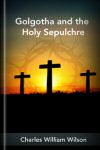
Was there a public place of execution in Jerusalem in the first century? Where exactly was Golgotha? How did the early church treat Christ’s tomb? Noted British geographer Charles William Wilson answers these questions and more, as he surveys both traditional and modern theories about the geography of Christ’s final hours. Wilson paints a vivid picture of ancient Gethsemane, Golgotha, and Jerusalem for the general reader.
Charles William Wilson (1836–1905) was a decorated British military officer and geographer. Wilson is the author of The Recovery of Jerusalem. He attended the Royal Military Academy, Woolwich, and became an officer in the Royal Engineers in 1855. He worked on the Ordnance Survey of Jerusalem in 1864, and Wilson’s Arch is named for him. He joined the Palestine Exploration Fund in 1867, and the Society of British Archeology in 1872. He became a fellow of the Royal Society in 1874. He was consul-general in Anatolia from 1879 to 1882, and was a hero of the Khartoum Relief Expedition from 1884 to 1885. Over the course of his career, Wilson participated in various Ordnance Surveys around the world. He was director-general of military education from 1895 to 1898, and held the position of chairman of the Palestine Exploration Fund from 1901 to 1905. Among his honors are the Order of the Bath, the Order of St. Michael and St. George, and the Doctor of Civil Law.
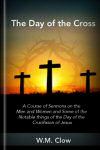
This book of sermons, Scottish minister W.M. Clow preaches through the Gospel accounts of Jesus final day. Each of Clow’s sermons focuses on a particular person or event, and their significance in the overall narrative.
Contents:
- Caiaphas (Matthew 27:57)
- Pilate (Matthew 27:2)
- Herod the Tetrarch (Luke 23:7–8)
- Forsaking Christ (Matthew 26:56)
- Envy’s Evil Work (Matthew 27:18)
- Barabbas (Matthew 27:16)
- Pilate’s Wife (Matthew 27:19)
- What Shall I Do with Jesus? (Matthew 27:22)
- The Blood of Jesus (Matthew 27:25)
- The Reed in His Hand (Matthew 27:29)
- Simon of Cyrene (Mark 15:21)
- The Women of Jerusalem (Luke 23:27)
- The Joy of the Way to Calvary (Luke 22:28)
- The Inscription on the Cross (John 19:19)
- The Cup Jesus Would Not Drink (Matthew 27:34)
- The Penitent Malefactor (Luke 23:42)
- The Cross As Love’s Necessity (Matthew 27:42)
- Mary, the Mother of Jesus (John 19:25)
- The Considerateness of Jesus (John 19:26–27)
- Mary Magdalene (John 19:25)
- The Roman Centurion (Mark 15:39)
- Jesus and the Individual (Luke 23:43)
- The Pierced Christ (John 19:37)
- Joseph of Arimathaea (Mark 15:42–43)
- Nicodemus (John 19:39)
- The Rent Veil (Matthew 27:51)
W.M. Clow (1853–1930) was a Scottish minister. He is also the author of The Cross in Christian Experience.
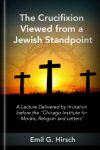
In this lecture, Emil Hirsch analyzes the accounts—biblical and otherwise—of Jesus’ crucifixion and concludes the sole person responsible for Jesus death was Pilate. Hirsch argues the Pilate, a product of a cruel and selfish empire, was representative of the typical Roman ruler, and that this system is responsible for Jesus’ condemnation and execution.
Emil G. Hirsch (1851–1923) was rabbi of the Sinai Congregation in Chicago, Illinois, and a major contributor to the Jewish Reform movement.
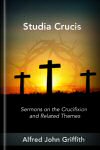
In the first seven sermons in this volume, Alfred John Griffith examines the seven dying utterances of Jesus. Griffith follows this up with five more sermons on the spirit of sacrificial love revealed on the cross of Christ.
Contents:
- Christ and His Executioners
- Christ and the Dying Thief
- Christ and His Mother
- The Bitterest Cry of All
- The Redeemer’s Thirst
- The Last Earth-Word
- The First Heaven-Word
- The Transfiguration Considered As an Act of Self-Sacrifice
- The Atoning Element in the Parable of the Prodigal Son
- Christ Weeping over Jerusalem
- Certainty about the Figure an Inspiration for Work
- The Forgiveness of Injuries
Alfred John Griffith was a Congregationalist minister in Sandown on the Isle of Wight.
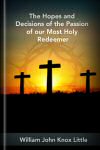
This course of sermons was originally preached in St. Paul’s Cathedral for Lent in 1884 and 1885. Noted Anglican preacher William John Knox Little reflects on the hope Jesus’ work on the cross provides, and how Christians can lay hold of these hopes.
Contents:
- The Hope of Forgiveness
- The Hope of Light
- The Hope of Strength
- The Hope of Glory
- The Decision on the Needs of the Soul
- The Decision on the Value of the Soul
- The Decision on the Deliverance of the Soul
- The Decision on the Perseverance of the Soul
- Jesus and the Resurrection
William John Knox Little (1839–1918) was canon of Worcester and vicar of Hoar Cross, Staffordshire. He studied at Trinity College, Cambridge and was ordained in 1863. He served as assistant master at Sherborne School before he moved to Worcester, gaining notoriety as a talented preacher. He served as a chaplain in the South African War.
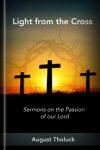
A well-known theologian and expositor, German writer August Tholuck also maintained a vibrant preaching ministry to the students at the University of Halle. These sermons peer into the depths of the Christian life and practically apply the Gospel accounts of Christ’s death. These powerful sermons are particularly directed to the circumstances of young men and students.
Contents:
- The Appearance of Jesus Christ in the Flesh
- The History of Our Savior’s Passion, part 1
- The History of Our Savior’s Passion, part 2
- The History of Our Savior’s Passion, part 3
- The History of Our Savior’s Passion, part 4
- The History of Our Savior’s Death and Resurrection, part 1
- The History of Our Savior’s Death and resurrection, part 2
- Jesus in Gethsemane
- Jesus and His Betrayer
- The Silence of Jesus
- The Oath of Jesus
- The Testimony of Jesus
- The Confession of Jesus
- The Command of Jesus
- The Prayer of Jesus
- Jesus and the Penitent Thief
- The Filial Love of Jesus
- Eli, Eli, Lama Sabachthani? part 1
- Eli, Eli, Lama Sabachthani? part 2
- Jesus Saith, I thirst
- The Death of Jesus, part 1
- The Death of Jesus, part 2
August Tholuck (1799–1877) was professor of theology at the University of Halle, Germany. He became the leading advocate of pietistic evangelical Christianity in Germany, and refuted the growing trend toward philosophical rationalism. He is the author of Exposition of St. Paul’s Epistle to the Romans, A Translation and Commentary of the Book of Psalms, and Commentary on the Epistle to the Hebrews.

This volume from Abbot Joseph Oswald Smith includes 54 two to four page devotional pieces that dwell on each moment of Christ’s final hours—from the approach to Gethsemane to his burial.
Joseph Oswald Smith (1854–1924) was abbot of Ampleforth Abbey, England. He is the author of The Ordinary of the Mass: The Food of Prayer, a Series of Meditations and Prayers.
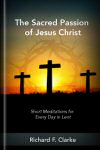
This brief volume from Richard F. Clark includes a brief devotional piece for each day of Lent. Each piece covers a few verses of Scripture and an event of Jesus final hours, from Passover to the tomb. Clark includes an introduction on how to meditate on the Passion.
Richard F. Clarke (1860–1927) was a fellow and tutor at St. John’s College, Oxford. He authored numerous works, including The Existence of God.
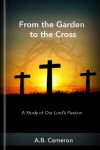
Taking the reader from Gethsemane to Jesus’ last words, A.B. Cameron provides 16 dramatic devotional pieces fit for family or personal reading. Cameron’s work is full of rigorous exegesis and extensive Scripture references.
A.B. Cameron was a nineteenth-century author.
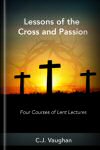
C.J. Vaughn’s series of Lenten lectures is divided into four parts: lessons of the cross and Passion, words from the cross, the reign of sin, and the Lord’s Prayer. His work is fitting for use in personal devotion or family and group study during the season of Lent, reminding readers of Christ’s sacrifice, and providing hope for a regenerated life through his work.
C.J. Vaughan (1816–1897) was educated at Trinity College, Cambridge before becoming Vicar of St. Martin’s, Leicester. Vaughan later went on to become the headmaster of Harrow School in London from 1844 to 1859, and the minister at Cambridge from 1861 to 1887. He is the author of many works including Lectures on the Revelation of St. John, Lectures on St. Paul’s Epistle to the Philippians, and St. Paul’s Epistle to the Romans.
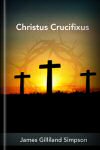
Bringing readers back to the bedrock truth of the Christian faith, James Gilliland Simpson reflects on Christ crucified. These four extended sermons focus not on “suggesting a point of view, or recommending an attitude toward life,” but rather on responding to “the message of divine truth.”
Contents:
- The Cross, Its Meekness and Power
- The Message of the Epistle to the Hebrews
- The Parable of the Prodigal Son
- The Last Words of the Crucified
James Gilliland Simpson was lecturer of Leeds Parish Church and principal of the Clergy School. He is also the author of Great Idea of Religion.
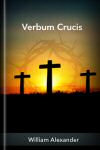
These 14 sermons from William Alexander reflect on the accomplishments of Christ on the cross while also providing insight into the ecclessiological and political situation of Ireland in the nineteenth century.
Contents:
- The Incarnation and the Mystery of the Cross
- The Self-Oblation of the Cross
- The Forgiveness of the Cross
- The Absolution of the Cross
- The Legacy of the Cross
- The Dereliction of the Cross
- The Bodily Pain of the Cross
- The Completeness of the Cross
- The Peace of the Cross
- The Witness of Human Language upon the Cross
- Prophecy and the Gospels
- The Church’s Strucutre, Life, and Gifts
- The Benediction of the Bishop and of the Saint
- Fidelity; Development; Peace
William Alexander (1824–1911) was educated at Brasenose College, Oxford. He was the last Bishop of Ireland to sit in the Westminster House of Lords before the disestablishment of the Church of Ireland in 1871 by the Irish Church Act of 1869. In 1896 he translated to become archbishop of Armagh and Primate of Ireland. He is also the author of The Witness of the Psalms to Christ and Christianity.
Reviews
1 rating

David Anfinrud
12/31/2023
There are some good books here giving you information that would expand on the subject. Getting Culture information on the way things worked. I have not read all the books but those I have read provided some insight into various aspects of the trial and crucificition of Jesus. Too often we ignore things written in the 1800's and earlier books. Yet they could provide some insights not looked at in today's writings. Book like the Trial of Jesus Christ A Legal Monograph takes a close look at the actual trials Jesus faced but both the Hebrew Trial and the Roman Trial. My favorite is "The Trial of Jesus: Illustrated from Talmud and Roman Law" Details given we can not see from just reading the text of the Bible. But People at the time of Christ would have understood the unwritten details the Bible does not give for they understood how the Process of law worked in Both areas and could see the injustice that had been done to crucify an innocent Man of Jesus.